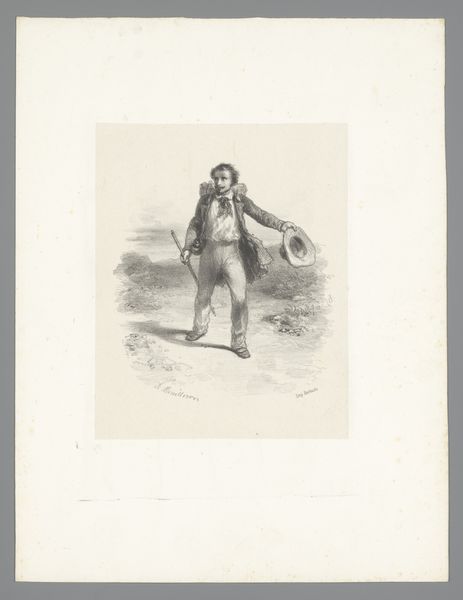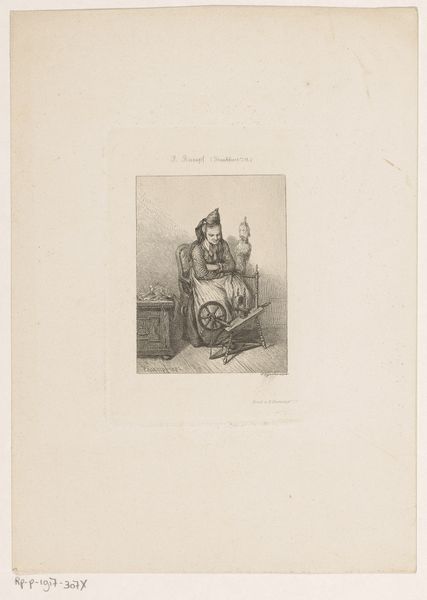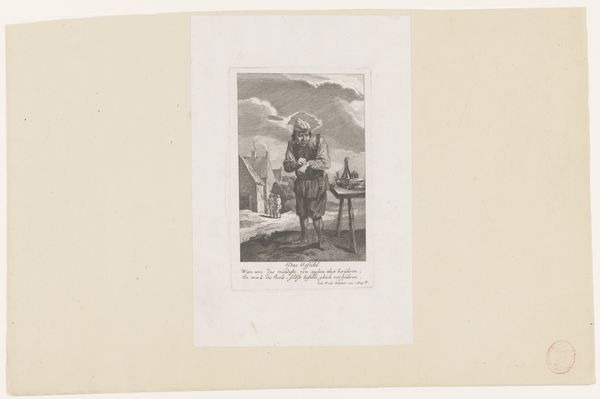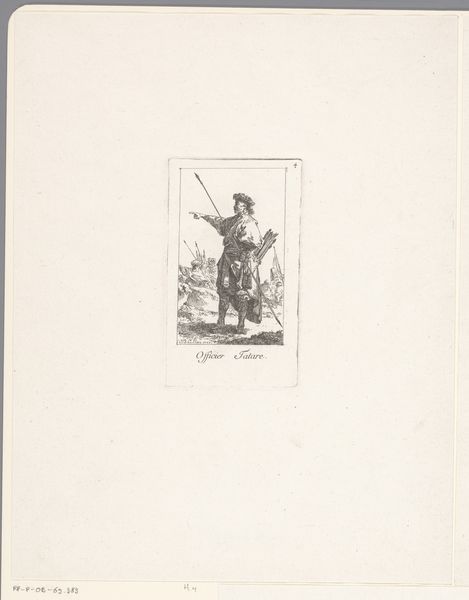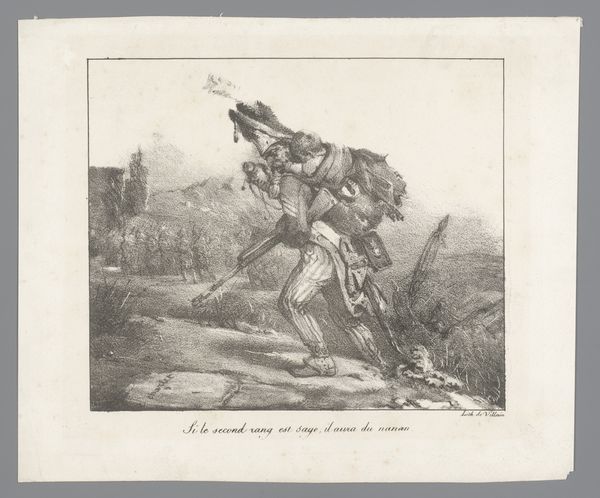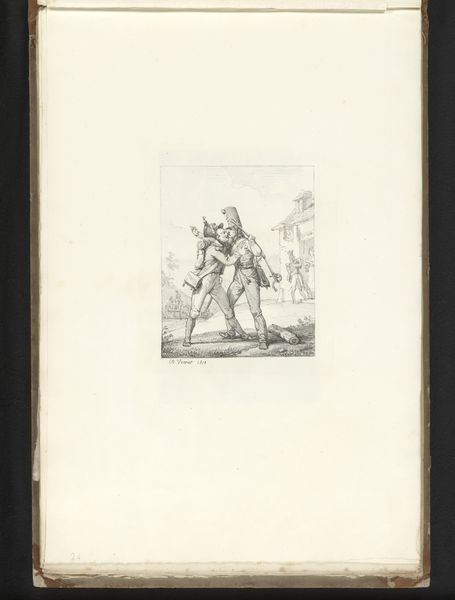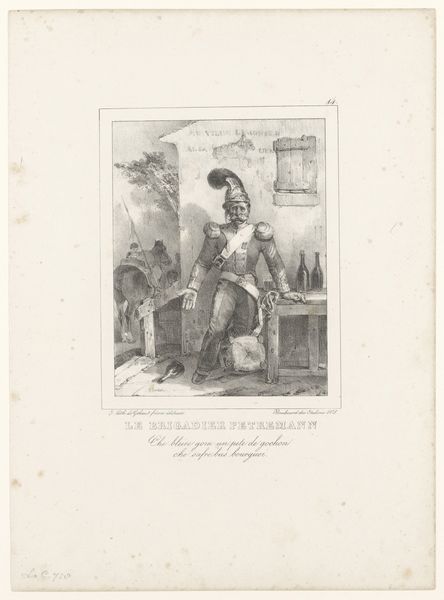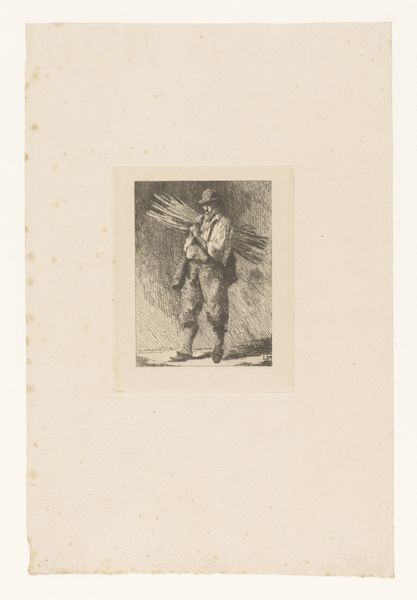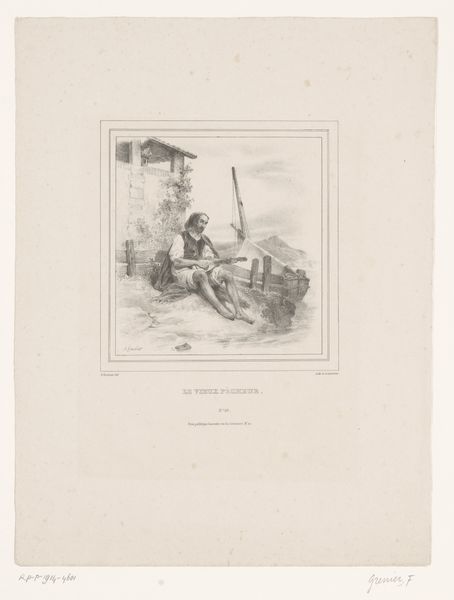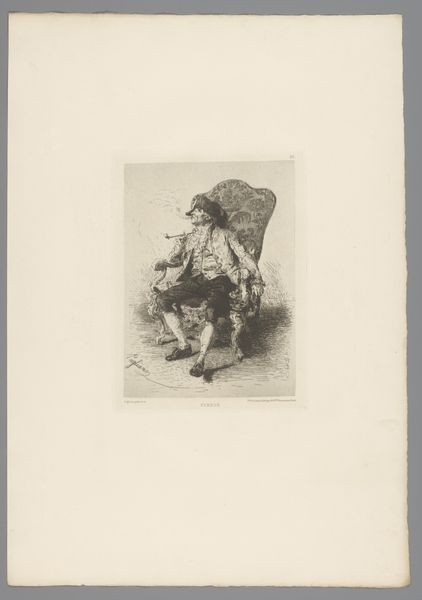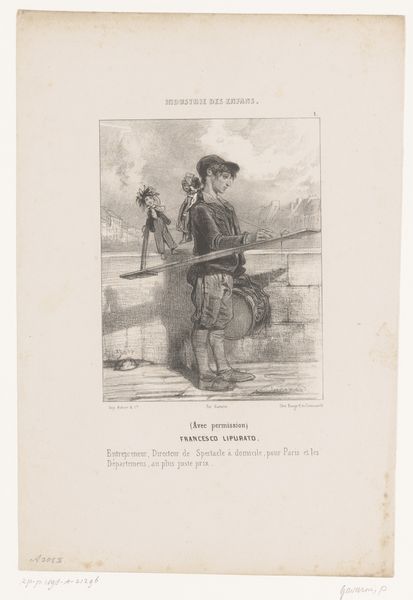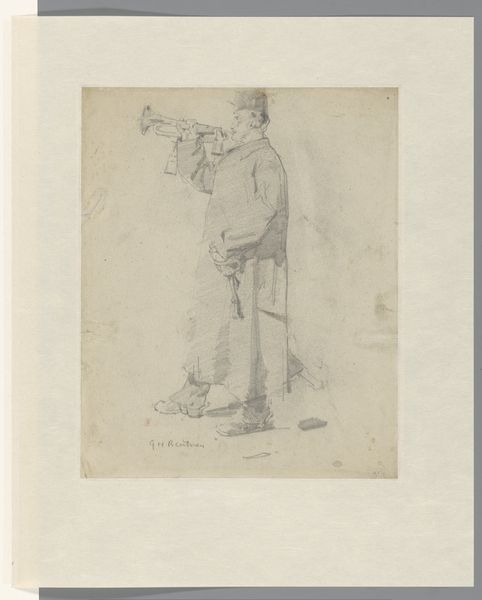
print, etching, engraving
#
16_19th-century
# print
#
etching
#
caricature
#
old engraving style
#
history-painting
#
engraving
Dimensions: height 298 mm, width 226 mm
Copyright: Rijks Museum: Open Domain
Curator: This etching, made around 1831, is titled "Leopold I van België steekt de grens over, 1831," and is, of course, held at the Rijksmuseum. It's a fascinating example of period caricature, offering sharp commentary on a pivotal historical moment. Editor: The figure's bowed posture and the weighty sacks... they really speak to a sense of burden and perhaps reluctant acceptance of responsibility. Curator: Exactly! The piece employs engraving and etching, both traditional printmaking methods that allowed for mass production and dissemination of political ideas. Note how the text at the bottom reads, "Dernier Protocole en Chair et en Os"—"The Last Protocol in Flesh and Bone." Leopold, quite literally, bears the "protocols" on his back. Editor: This speaks volumes about the conditions of artistic production and reception at that time. Print media allowed political critique to spread far beyond elite circles. Considering that Belgian independence was so recently declared, images like this helped shape public opinion. What materials were readily accessible? Whose messages were amplified? The lines are sharply defined—revealing, almost brutally so, what labor and consumption was taking place. Curator: The political landscape truly comes alive when we analyze visual rhetoric within broader socio-political structures. Who commissioned this, and for what specific audience? Editor: Indeed. And if you examine the engraving, we must ask: were cheaper inks used to produce it on a mass scale? This kind of thing really impacted access and use. Curator: These prints offer essential clues about how emerging nations use images to construct a shared identity, even one based on shared anxieties about governance. Leopold becomes a figure saddled with the bureaucratic weight of his new nation. Editor: Absolutely, and considering the physical labor involved in etching—the hours of meticulous carving—it emphasizes a contrast between elite decision-making and the realities of those who must enact policy. What did it take to disseminate such materials, literally? Curator: A fantastic question! The way those production processes ultimately shaped how the broader public engages with state power. Editor: Thinking about these layers gives us more insight into how society, art and power intersect in critical ways.
Comments
No comments
Be the first to comment and join the conversation on the ultimate creative platform.
